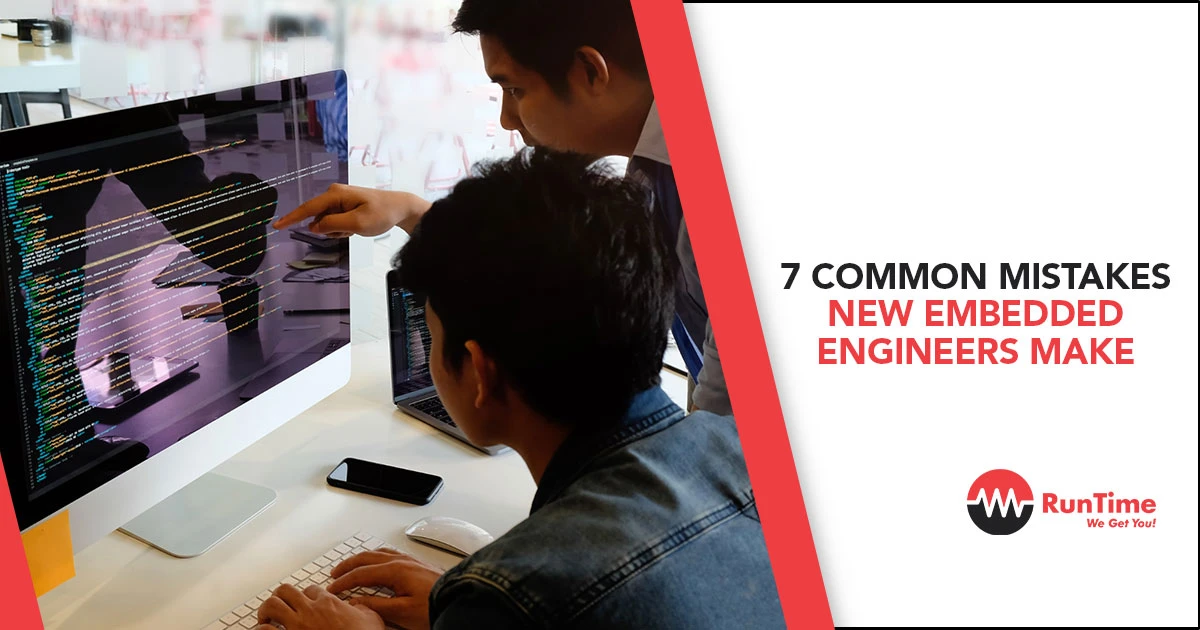Entering the field of embedded systems engineering is both thrilling and demanding. Serving as the cornerstone for various modern technologies, such as automotive systems and smart home devices, embedded engineering necessitates a meticulous amalgamation of theoretical knowledge, practical expertise, and innovative problem-solving. Nevertheless, even the most skilled individuals can fall victim to common pitfalls. In this article, let’s discuss the common mistakes new embedded engineers make as well as strategies for overcoming these challenges to enable a smoother transition into this dynamic field.
1. Overlooking the Importance of Thorough Documentation
Documentation is often seen as a secondary task, yet it’s crucial for maintaining and upgrading systems. A common oversight is not documenting the rationale behind specific design decisions or failing to update documentation after changes are made. For instance, an engineer might implement a custom communication protocol to meet specific system requirements but neglect to document the protocol’s design and operation. This oversight can lead to significant challenges when another engineer attempts to modify or debug the system, resulting in increased development time and potential errors.
Steps to Take: Cultivate a documentation-first mindset. Document as you design, not as an afterthought. Use tools and practices that integrate documentation into the development process, such as Doxygen for code documentation or version control platforms that support detailed commit messages.
2. Underestimating Resource Constraints
Embedded systems often operate under strict resource constraints, including limited memory, processing power, and energy. A typical mistake is designing software without considering these limitations, leading to performance issues or inability to run on target hardware. For example, using a standard library function that consumes excessive memory in a low-power IoT device could lead to unexpected crashes or system instability.
Steps to Take: Always design with the target hardware in mind. Perform resource budgeting early in the development cycle, and opt for memory-efficient algorithms and data structures. Tools like memory profilers and static code analysis can help identify potential resource issues early on.
3. Neglecting Real-time Constraints
Embedded systems often require real-time operation, where tasks must be completed within strict timing constraints. New engineers might not fully appreciate the importance of meeting these deadlines, potentially leading to systems that fail under stress. An example of this mistake is neglecting to use real-time operating systems (RTOS) features, such as priority-based scheduling, in applications requiring timely responses, resulting in missed deadlines and erratic behavior.
Steps to Take: Gain a solid understanding of real-time concepts and RTOS functionalities. Design systems with real-time constraints in mind, and use tools like timing analyzers to ensure that your system meets its deadlines.
4. Ignoring Power Consumption
In many embedded applications, particularly in battery-operated devices, power efficiency is paramount. Overlooking power consumption during design can lead to products with poor battery life, affecting user satisfaction. A common example is not optimizing software to enter low-power modes during inactivity or unnecessarily waking the device from sleep states.
Mitigation Strategy: Incorporate power management strategies from the outset. Utilize hardware and software features designed for power saving, and rigorously test power consumption under various operating conditions. Employing tools for power profiling can also provide insights into potential improvements.
5. Misjudging the Complexity of Integration and Testing
Integration and testing are critical phases in embedded systems development, yet they are often underestimated. Engineers might assume that components will seamlessly work together or that testing can be superficial. An instance of this mistake is integrating a new sensor without considering how its data rate might overwhelm the system’s processing capabilities, leading to data loss or system crashes.
Steps to Take: Adopt a comprehensive testing and integration strategy that includes unit testing, integration testing, and system testing. Use continuous integration practices to automate testing and identify issues early. Simulate real-world conditions as closely as possible during testing.
6. Failing to Plan for Scalability and Maintenance
As systems evolve, they often need to support additional functionalities or hardware upgrades. New engineers might design solutions that are rigid or hard to extend, complicating future enhancements. For example, hard-coding configurations or using non-modular software architecture can make it difficult to adapt the system to new requirements.
Steps to Take: Design with scalability and maintenance in mind. Adopt modular design principles and use configuration files or databases for parameters that may change over time. Embrace design patterns that facilitate extensibility and maintainability.
7. Overreliance on Vendor Documentation and Tools
While vendor documentation and tools are invaluable resources, relying on them too heavily without understanding the underlying principles can be limiting. For instance, using a vendor-provided software development kit (SDK) without understanding its limitations or how it interacts with the hardware can lead to inefficient designs or difficult-to-debug issues.
Steps to Take: While leveraging vendor resources, also invest time in understanding the hardware and software fundamentals. Experiment with lower-level programming and direct hardware manipulation to gain deeper insights and become more versatile in solving complex problems.
Finally
The journey into embedded systems engineering is fraught with challenges but equally rewarding. By being aware of and actively addressing these common mistakes, new engineers can significantly enhance their effectiveness and contribution to the field. Continuous learning, a proactive approach to problem-solving, and adherence to best practices are key to navigating the complexities of embedded systems development successfully.
Hire the Best Embedded Engineers with RunTime
At RunTime, we are dedicated to helping you find the best Embedded Engineering talent for your recruitment needs. Our team consists of engineers-turned-recruiters who have an extensive network and a focus on quality. By partnering with us, you will have access to great engineering talent that drives innovation and excellence in your projects.
Discover how RunTime has helped 423+ tech companies find highly qualified and talented engineers to enhance their team’s capabilities and achieve strategic goals.
On the other hand, if you’re an engineer looking for new opportunities, RunTime Recruitment’s job site is the perfect place to find job vacancies.









